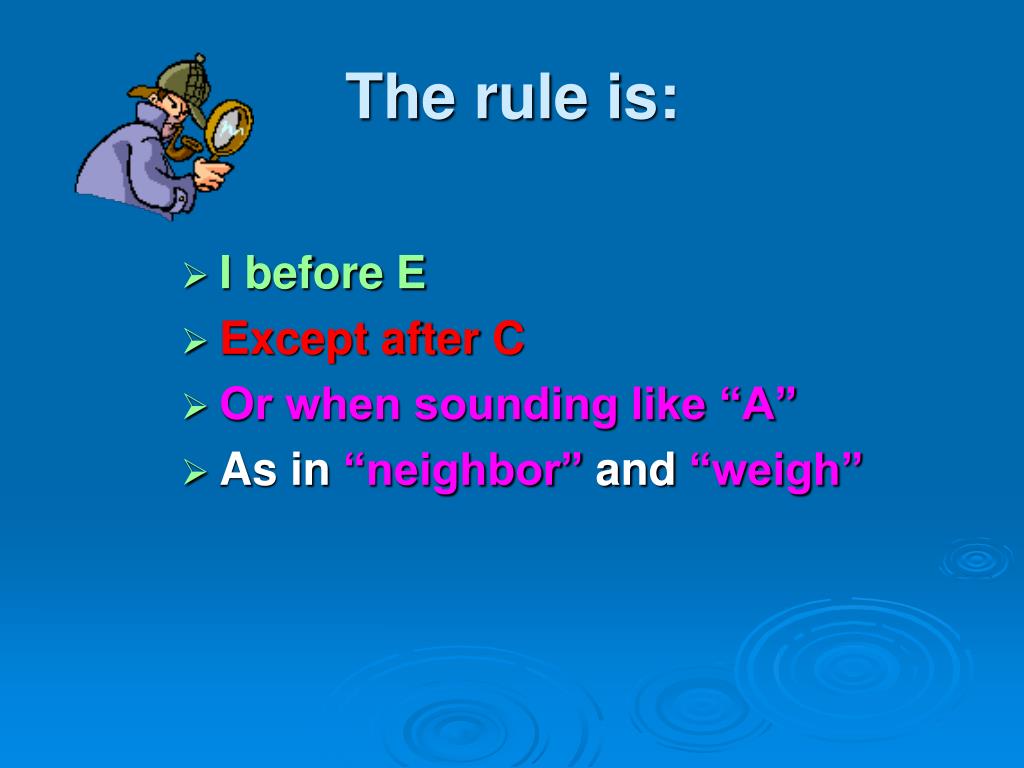
PPT IE or EI ? PowerPoint Presentation, free download ID6525106
The rule goes something like this: i before e, except after c or when sounded as a, as in neighbor and weigh . The problem is that this rule was created sometime in the 18th or 19th century — one book from 1834 spells out the basic rule clearly. It's a problem because, like many English spelling "rules", it's flawed and incomplete.
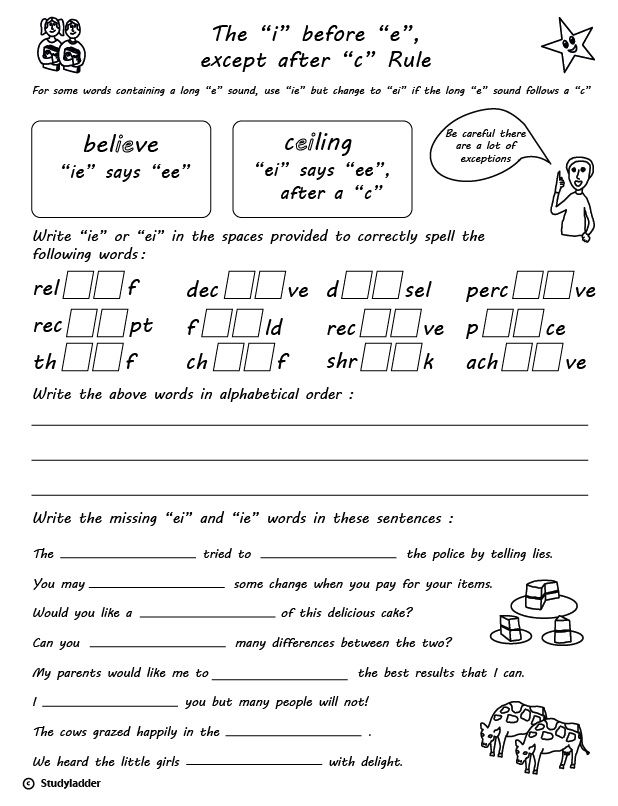
Rule 'i' before 'e' except after 'c' Studyladder Interactive Learning Games
I Before E Except After C: 9 Helpful Spelling Rules Shundalyn Allen Updated on September 3, 2020 Grammar Learning spelling conventions can help you write with confidence. Which of the following rules are new to you? Here's a tip: Want to make sure your writing shines?
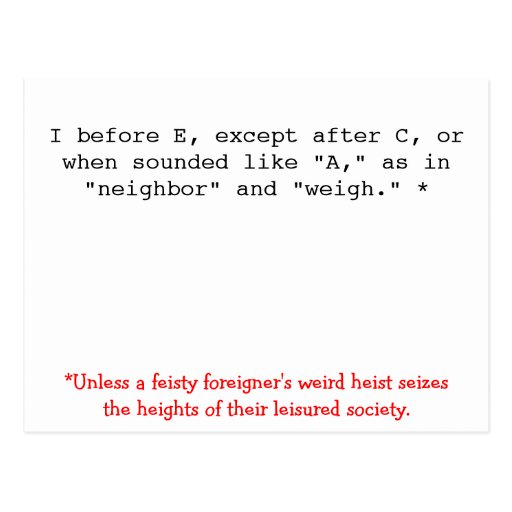
Spelling Rules I before E Postcard Zazzle
They say "I before E except after c," but why is that not always the case? Rules make things easy to remember, but many rules have exceptions.

What Is the "I Before E Except After C" Rule and Its Exceptions? Capitalize My Title
A Student Just Debunked the Most Famous Grammar Rule of All Time Brandon Specktor Updated: Jul. 16, 2021 Repeat after us: "I before E, except after W" It's a Tuesday in the mid-1800s, and a.

i before e except after c // English Spelling Rules 18 YouTube
The "I before E" rule is a common English grammar rule that states that the letters "i" and "e" should appear in that order in words, except after the letter "c". For example, the words "believe" and "receive" follow the rule, while the words "ceiling" and "conceit" do not. This rule is generally accurate, but there are a few exceptions.

I Before E and E Before I Words
Lexico agrees that when the sound is pronounced like a double "e," the rule does apply. Note 1 The online version of Merriam-Webster has an article with additional sayings that explain more of the exceptions to the "'i' before 'e' except after 'c'" rhyme, but it doesn't cover all of the possibilities.
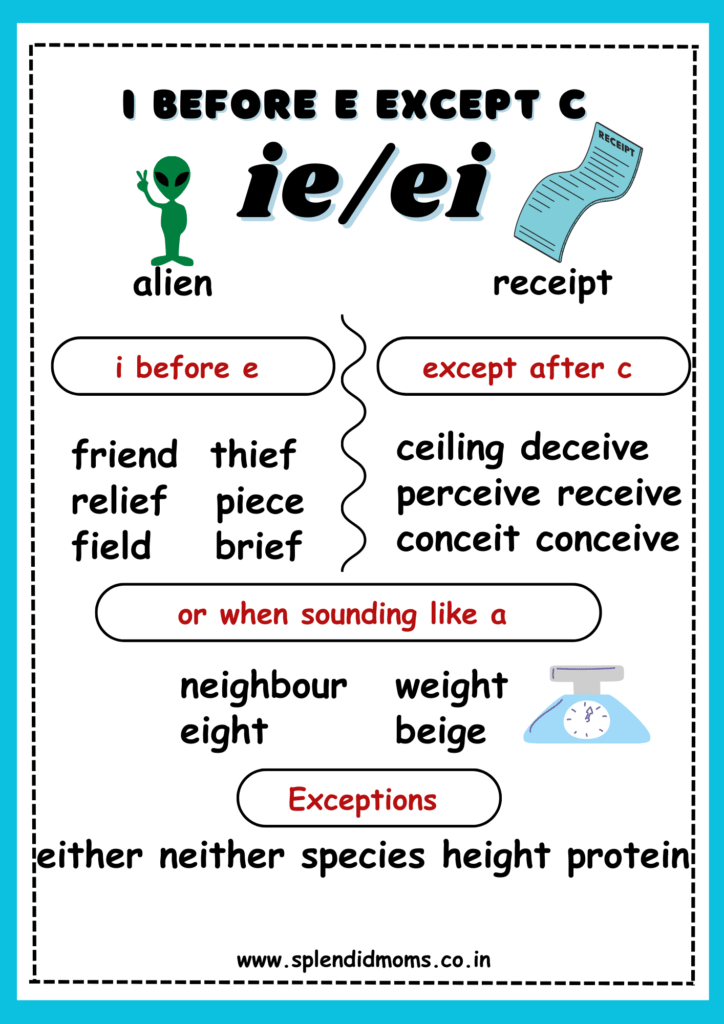
i before e except after c Splendid Moms
Take a look at a more complete version of the rule: i before e, except after c (receive); or when sounded as ay (weigh); or when sounded as eye (height); or when ing is added to a verb ending in e (cueing) BUT i before e even after c if the c makes a sh sound (glacier); or if the word is a comparative or superlative (fancier)
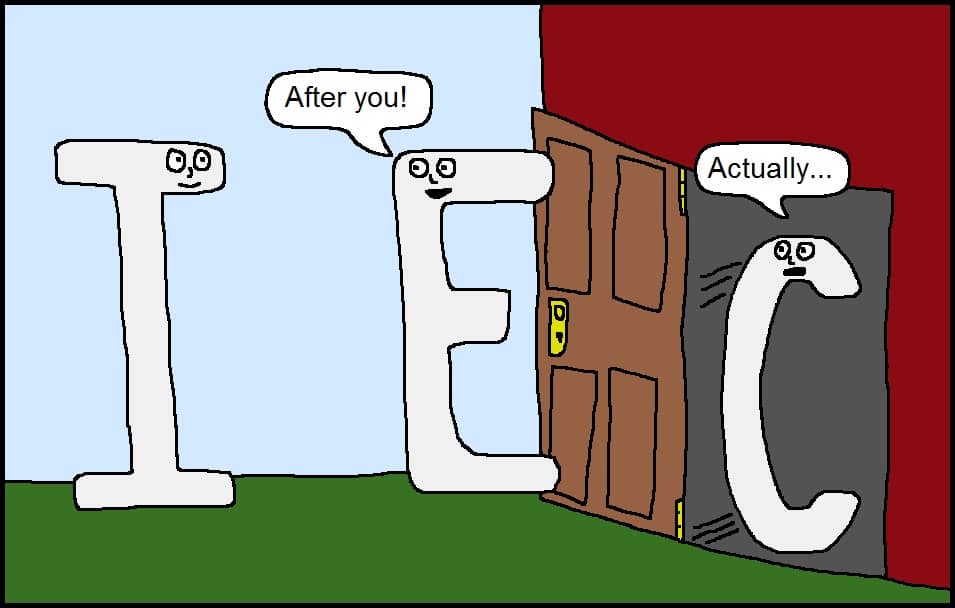
Top Spelling Rules
The " I before E " rule is most useful if we focus on instances when E and I are put together as vowel digraphs —that is, two vowels working together to form a single speech sound.
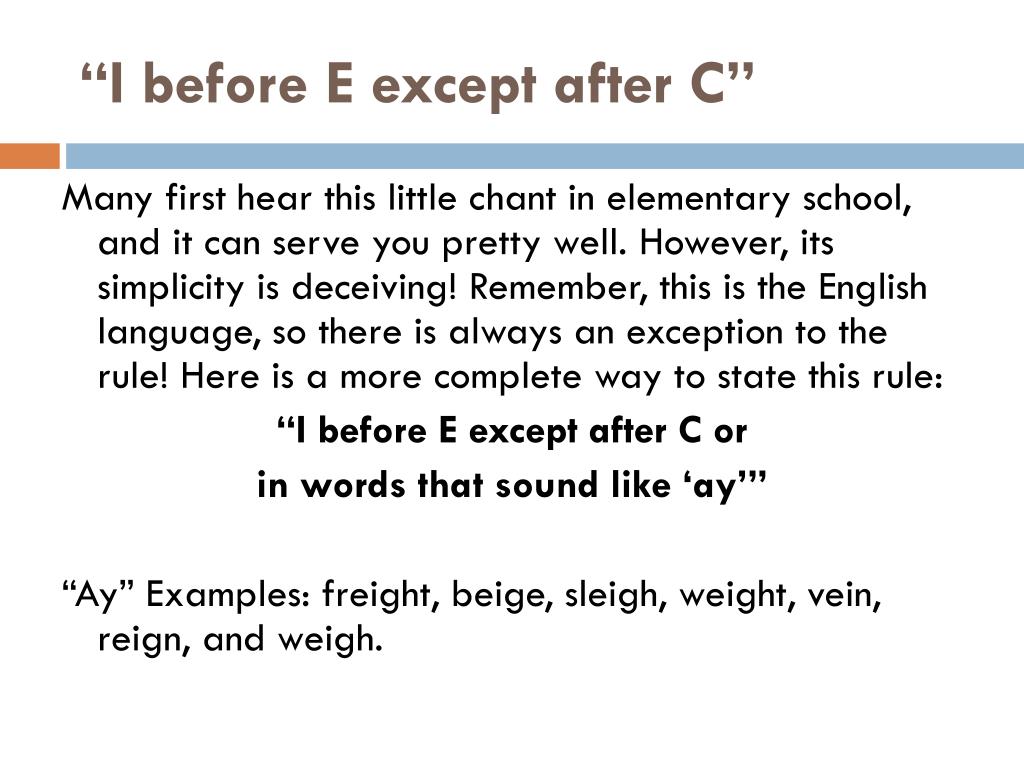
PPT Spelling Rules and Practice PowerPoint Presentation, free download ID5787378
Rules Are Made to Be Broken As it turns out, if we were only talking about "i" and "e", the rule would largely apply. In a word without the letter "c", "i" will almost always come before "e". However, there are so many exceptions to the "i before e, except after c" rule, it all but washes it out.

Improve your handwriting through a beautiful print text Mnemonic rule "I before E" exceptions
Grammar & Usage Spelling & Pronunciation I Before E Except After C The famous rhyme is wrong. Here's why. What to Know The saying i before e, except after c is supposed to help us spell correctly, but it only reliably identifies the category of words that includes receive and conceited.

i before e except after c (PowerPoint lesson) Teaching Resources
i before e except after c or when it sounds like "aye," as in neighbor and weigh. We also know, either from experience or by instinct, that there are exceptions to the rule. A bunch of them. In fact, the rule really only works for words with the long "ee" sound as in: receive, receipt, conceive, conceit, believe, belief, brief, fierce.

Spelling Rules I before E Square Sticker Spelling rules, Spelling, Custom stickers
One of the first spelling 'rules' we learn at school in the UK is a rhyme: 'i' before 'e' except after 'c'. This can help with some words that contain '-ie-' or '-ei-', such as 'believe' or 'conceive'. In practice, though, this is quite a loose a rule as there are many exceptions.

"I Before E Except After C... Grammar Rule Gift for Teacher Writer" Tshirt by SwankyBazaar
The " i before e, except after c " rule is a general guideline for spelling words in English. It means that in a combination of the letter i and e, we should write - ie -. Only after a letter c should we write - ei -. -ie- words shield tie relieve piece friend believe field die lie yield Here are some -ei- which follow the 'ei after c' rule ceiling

You may have heard the rule "'I' before 'e' except after 'c'" before but do you know when it
12 Everyone learns the I before E except after C or as sounded like A as in neighbor and weigh. But as an English Learner, how much trouble can you get into with this rule? What else do you have learn to know when to apply it and how to use it profitably? spelling mnemonic Share Improve this question Follow edited Mar 7, 2013 at 20:09
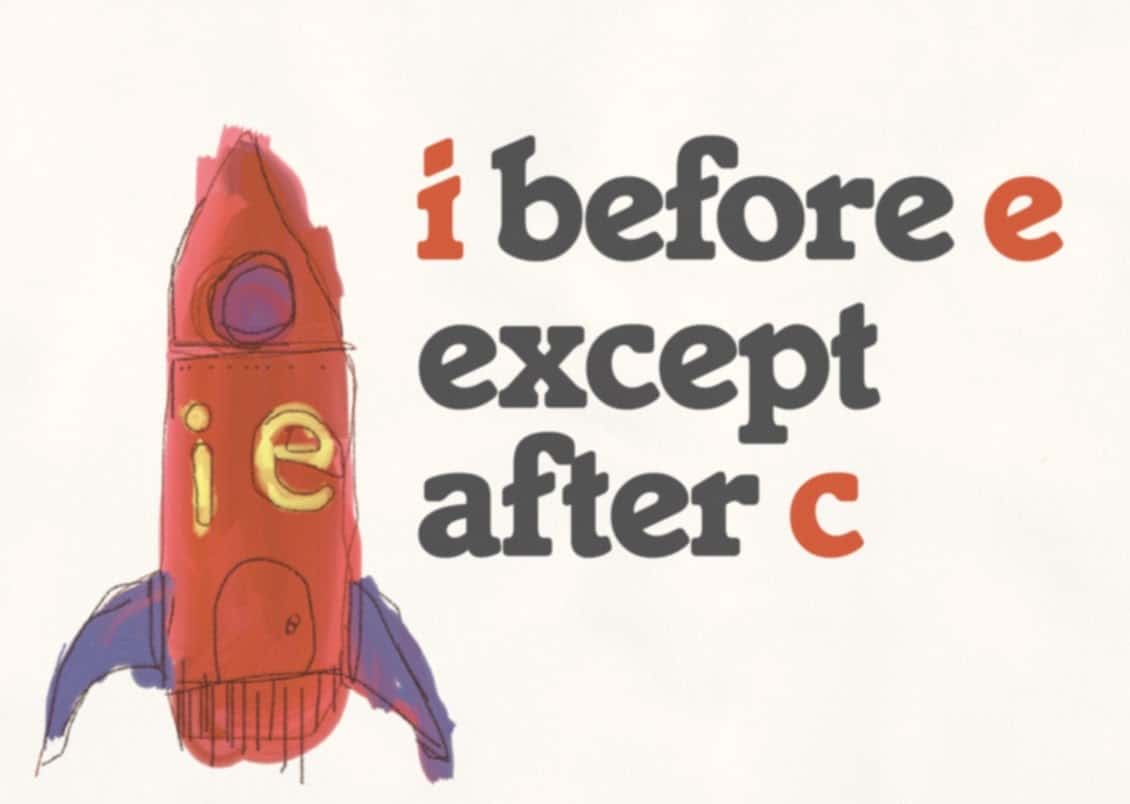
Skills in practice the i before e rule Padua Communications
The phrase "i before e except after c" is a mnemonic: i.e., something that helps us remember something. In this case, it reminds us that "i" comes before "e" in many words, except when they are preceded by a "c.". We've seen how this works with "bel ie ve" and "de cei ve," but there are plenty of extra examples to help.

The Complete I Before E Rule With Explanations
The "I before E" rule may not be perfect, but it is extremely useful. First, the "I before E" mnemonic in its entirety: I before E, Except after C, And when sounded like A. As in neighbor and weigh. Let's see how far this rule will take us with common words. I before E. achieve.